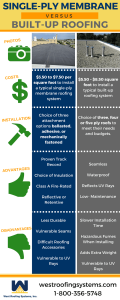Review The Financial Effects And Benefits Of Solar Installment To Recognize The Possible Economic Benefits For Those Thinking About This Renewable Resource Endeavor
Review The Financial Effects And Benefits Of Solar Installment To Recognize The Possible Economic Benefits For Those Thinking About This Renewable Resource Endeavor
Blog Article
Content By-McMillan Barbee
When thinking about the expenses of solar setup, you might wonder about the in advance financial investment called for and whether it aligns with the prospective long-lasting benefits. Understanding the complexities of these costs and the different variables influencing the overall return can shed light on the worth recommendation of transitioning to solar energy. By reviewing both the preliminary setup expenses and the forecasted savings over time, you can get insight right into whether the financial investment in solar installation holds guarantee for your monetary future.
Initial Arrangement Costs
When considering the prices of solar installment, the preliminary configuration expenses play a critical role in your decision-making procedure. These in advance expenses consist of the price of photovoltaic panels, inverters, placing tools, and installment labor.
The price of photovoltaic panels can vary depending on the brand name, efficiency, and size you select. Inverters are necessary for transforming the sunlight's energy into usable electrical energy and come in different types such as string inverters, microinverters, and power optimizers, each with its very own price ramifications.
Placing equipment, such as racks and rails, is required to firmly mount solar panels on your roof covering or residential property.
The setup labor price covers the specialist installment of the solar system, making certain that whatever is set up appropriately and effectively. Keep in mind that while these initial setup costs might appear high, there are usually refunds, tax obligation rewards, and funding alternatives readily available to help offset the expenses and make solar installation a lot more economical in the future.
Long-Term Financial Savings Evaluation
To comprehend the financial advantages of solar installation with time, it's vital to conduct a detailed lasting financial savings analysis. While the preliminary configuration costs of photovoltaic panels may seem complicated, the long-lasting savings can surpass these expenses dramatically. By using the power of the sun to produce electrical power for your home, you can potentially conserve hundreds of dollars on your energy expenses over the lifespan of your solar system.
One of the key aspects to take into consideration in a long-term financial savings analysis is the reduction in your electrical power costs. With photovoltaic panels, you can generate your electrical energy, minimizing and even eliminating your dependence on the grid. This can result in substantial cost savings, specifically as utility rates remain to rise.
Additionally, https://insideclimatenews.org/news/26052022/inside-clean-energy-snow-solar/ offer motivations such as tax obligation debts and refunds for mounting solar panels, further boosting your long-term savings. By making use of these rewards and maximizing your solar power manufacturing, you can enjoy significant monetary advantages for years to find.
Roi Estimation
Thinking about the monetary benefits of solar setup, it's time to examine the Return on Investment (ROI) computation. Figuring out the ROI entails contrasting the overall costs of installing a solar system with the financial benefits it creates over its life-span.
To calculate ROI, divide the web make money from the system by the complete investment price and increase by 100 to get a percent. The ROI formula is: (Internet Earnings/ Overall Financial Investment Expense) x 100.
For example, if the total cost of setting up a planetary system is $20,000, and over its life-span, it creates cost savings and incomes totaling $30,000, the net profit would be $10,000. Dividing this by the complete investment price of $20,000 offers a ratio of 0.5. Increasing this by 100 gives an ROI of 50%.
Typically, a greater ROI indicates a more monetarily satisfying investment. Elements like federal government incentives, upkeep costs, and energy price variations can influence the ROI of solar installments. Understanding the ROI assists in assessing whether purchasing solar energy deserves it in the future.
Verdict
In conclusion, understanding the costs of solar installation is critical for identifying if it is worth the financial investment. By considering preliminary arrangement costs, carrying out a long-lasting financial savings evaluation, and calculating the roi, you can make an educated choice about the economic value of solar energy. With the possibility for minimized energy costs and raised energy independence, buying solar installment can be a smart choice for both your budget and the atmosphere.
